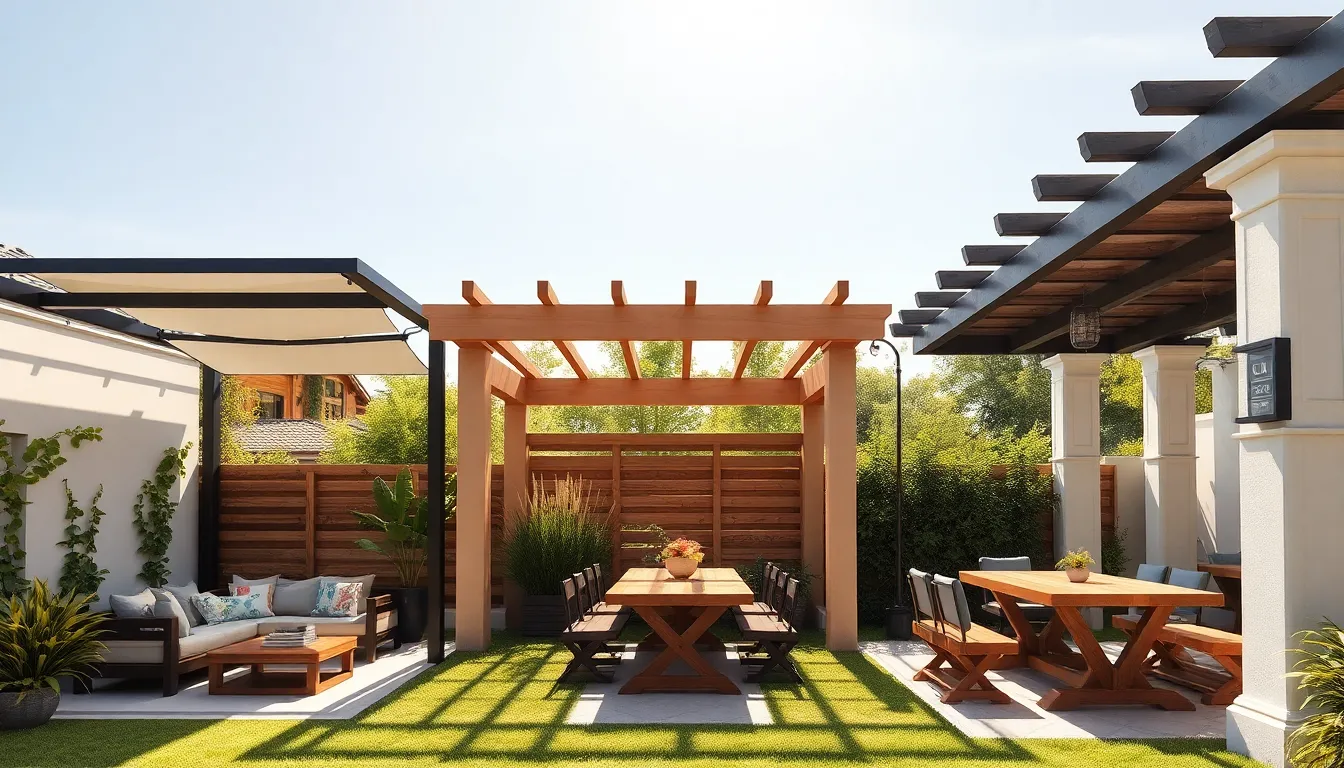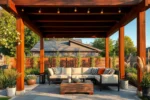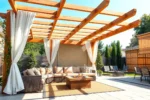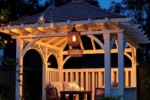Creating a comfortable, inviting backyard often hinges on finding the perfect balance between shade and privacy. Whether you’re new to outdoor design or looking to elevate your space, pergolas offer a stylish and practical solution that enhances both comfort and aesthetics.
In this article, you’ll discover 15 thoughtfully curated pergola designs that cater to a variety of tastes and needs. From simple structures that provide gentle shade to more elaborate builds that create secluded retreats, these ideas will inspire you to transform your backyard into a personal oasis.
Classic Wooden Pergola Designs
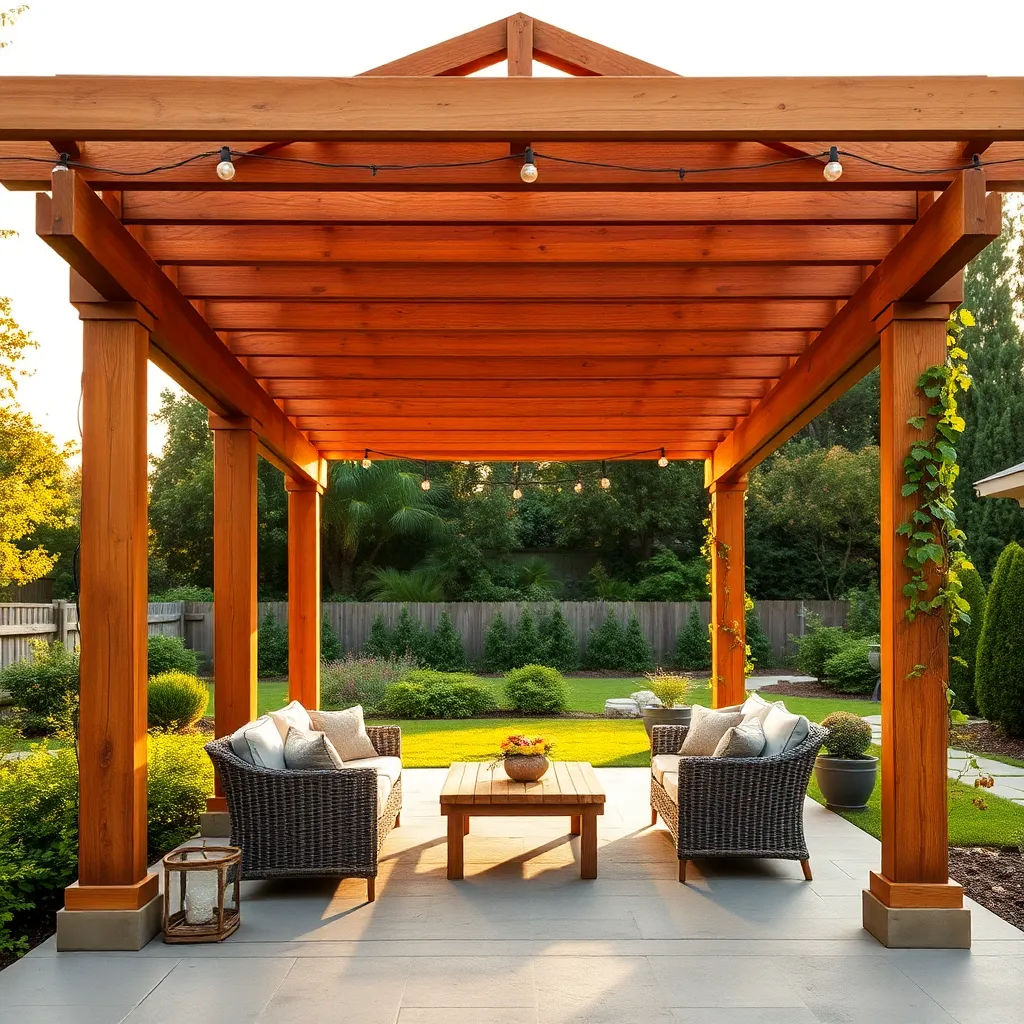
Classic wooden pergolas offer a timeless look that blends well with most backyard styles. For durability, choose cedar or redwood as these woods resist rot and insects naturally. When planning your pergola, aim for post dimensions of at least 4×4 inches and a height of 8 to 10 feet to ensure stability and comfortable clearance.
To enhance shade and privacy, consider adding adjustable louvers or climbing plants like wisteria or grapevines on the crossbeams. For a professional finish, use stainless steel or galvanized hardware to prevent rust and secure joints firmly. Beginners should start with a simple rectangular design, while experienced DIYers can experiment with curved rafters or integrated seating for a custom touch.
Modern Metal Pergola Styles
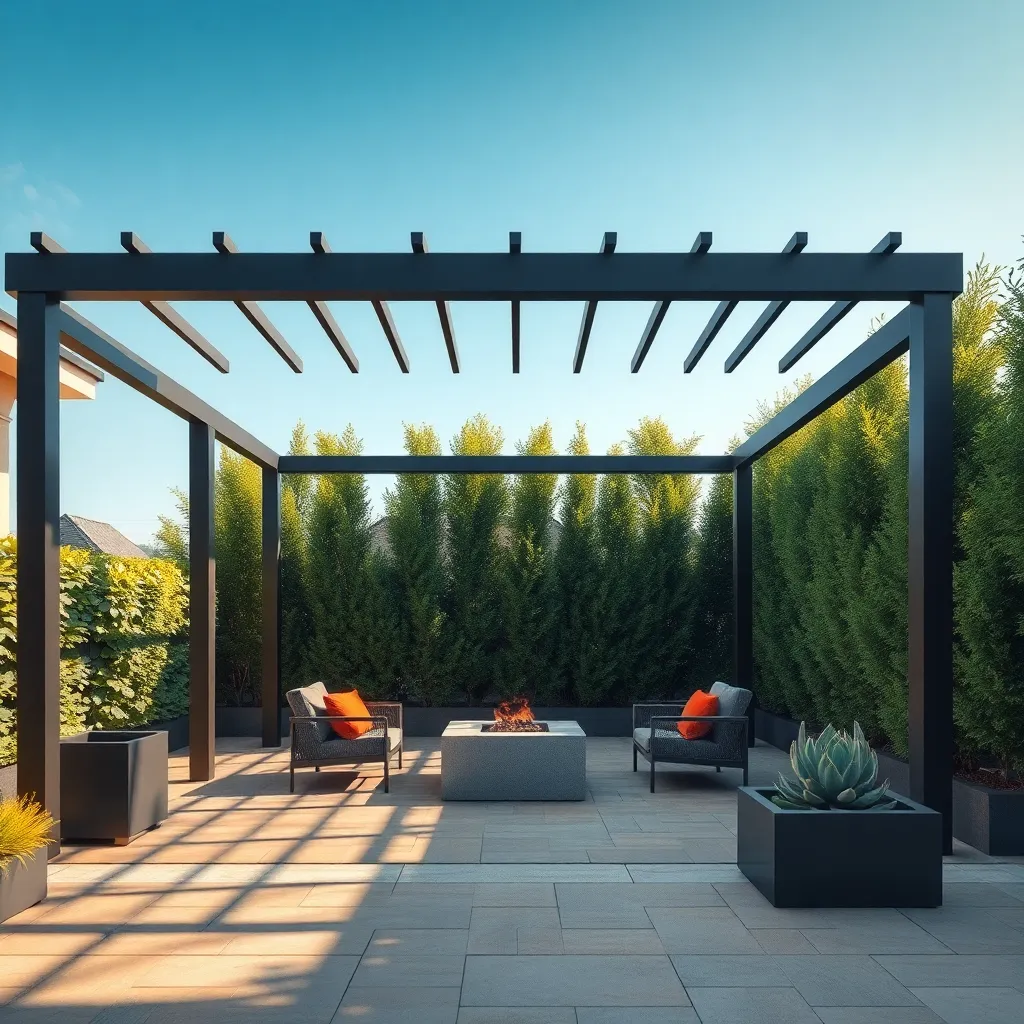
Modern metal pergolas bring a sleek, durable option to backyard design, often constructed from aluminum or steel for long-lasting strength and low maintenance. For a clean, contemporary look, choose a powder-coated finish in neutral colors like black, gray, or white, which resists rust and fading. When planning your pergola, consider dimensions around 10×12 feet for versatile shade that fits most patios, and incorporate adjustable louvered roofs or retractable canopies for customizable sunlight control.
To elevate your metal pergola’s functionality and style, add integrated lighting or hanging planters to create ambiance and soften the metal’s industrial feel. Advanced tips include anchoring the structure with concrete footings for stability and using galvanized hardware to prevent corrosion over time. Don’t forget to pair your pergola with outdoor curtains or privacy screens for added shelter and seclusion, making your backyard a perfect retreat.
Incorporating Adjustable Shade Panels
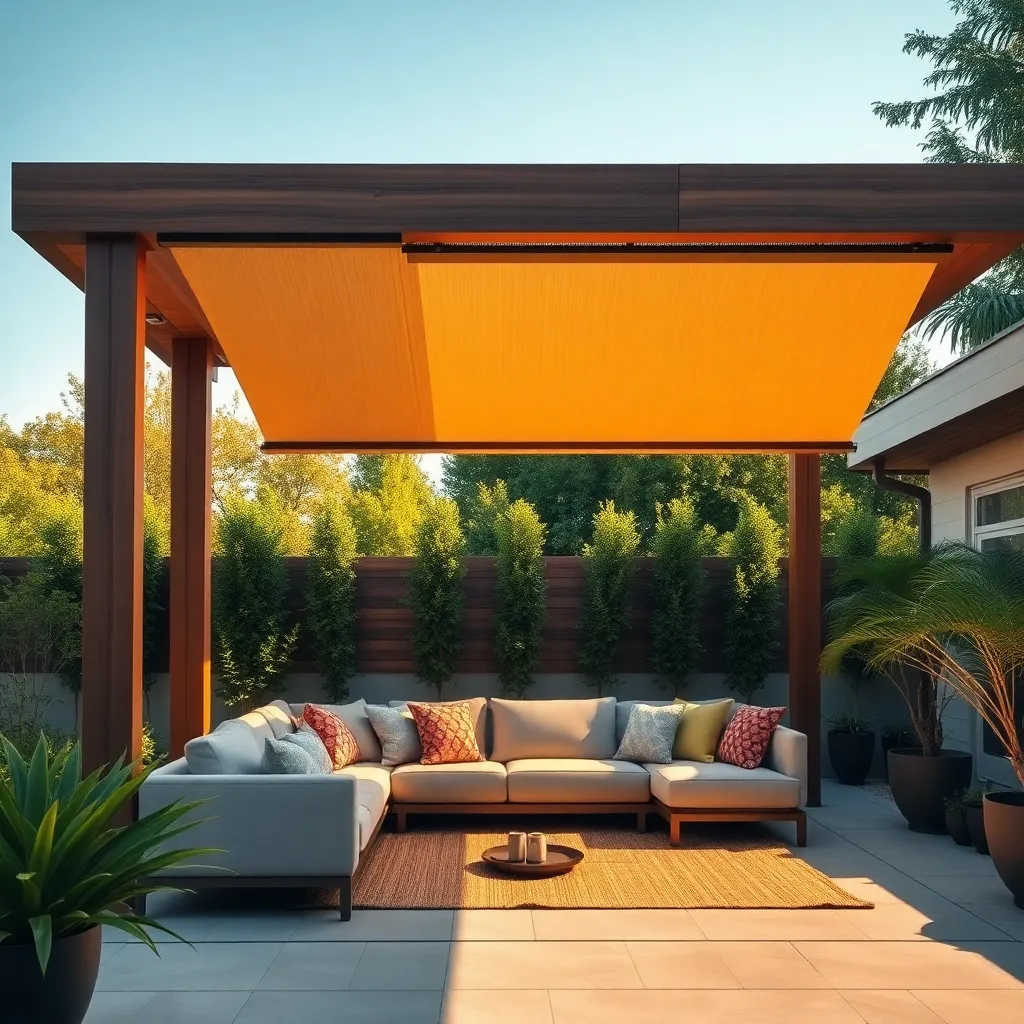
Incorporating adjustable shade panels into your pergola design offers dynamic control over sunlight and privacy throughout the day. Opt for durable materials like aluminum slats or weather-resistant fabric panels mounted on sturdy tracks, allowing you to easily tilt or slide them to adjust shade levels. For optimal functionality, consider panels that span 4 to 6 feet in width, giving you ample coverage while maintaining a sleek look.
To enhance both aesthetics and usability, install a simple manual crank system or a motorized option for effortless adjustment, especially in larger pergolas. Advanced gardeners can integrate rain-sensing technology that automatically closes panels during wet weather, protecting outdoor furniture and creating a versatile, all-season retreat. Remember to secure panels with corrosion-resistant hardware to ensure longevity and smooth operation in various climates.
Pergolas with Climbing Plants
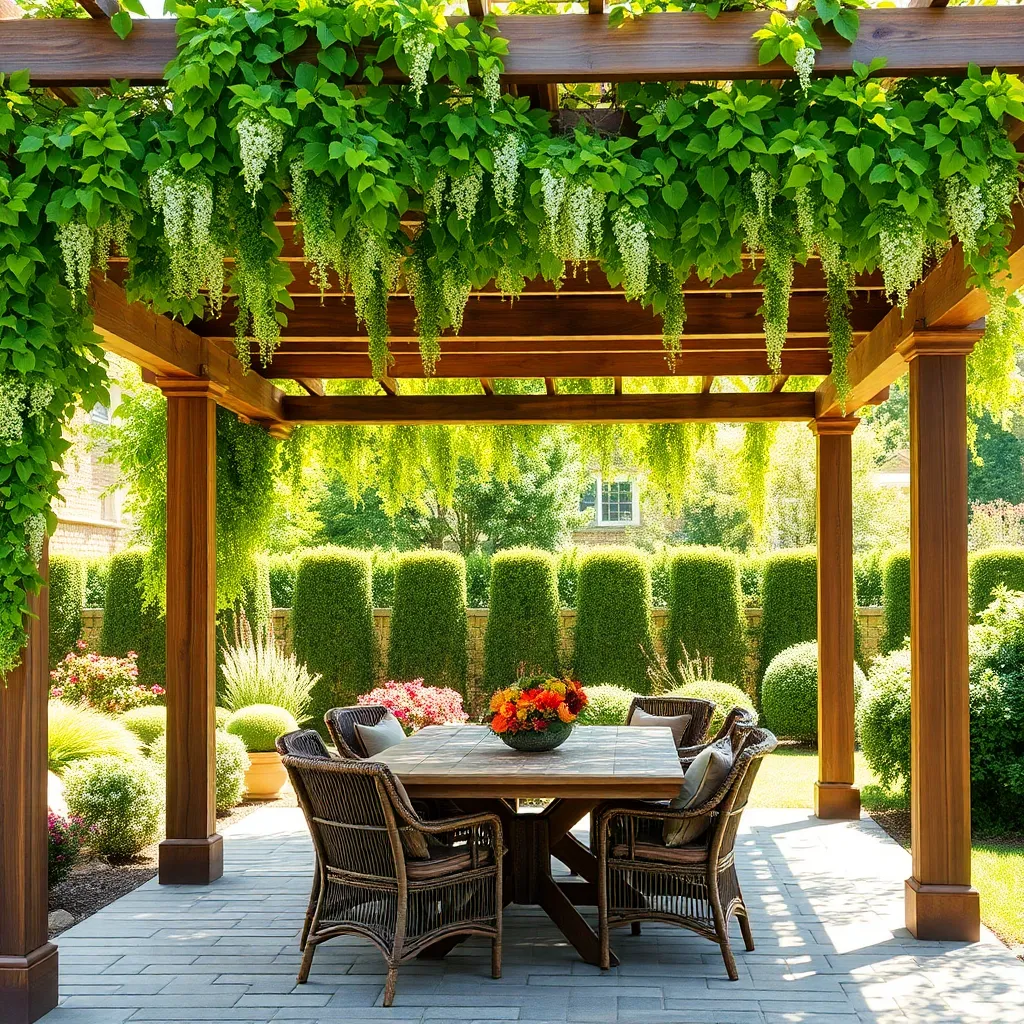
For a charming and natural look, build your pergola using sturdy materials like cedar or pressure-treated wood, which withstand outdoor conditions well and support heavy climbing plants. Design the structure with spaced beams about 12 to 18 inches apart to allow sunlight while giving vines enough room to weave through. Beginners should start with fast-growing climbers like clematis or climbing roses, while advanced gardeners might incorporate mixed plantings for year-round interest.
To encourage healthy growth and coverage, install trellises or wire grids along the pergola’s sides for the plants to cling to, and consider adding drip irrigation for consistent moisture. Regular pruning will maintain shape and prevent overgrowth, so plan for easy access around the structure. By combining thoughtful design and plant care, your pergola will become a lush, shaded retreat that enhances privacy and outdoor enjoyment.
Privacy Screens for Pergolas
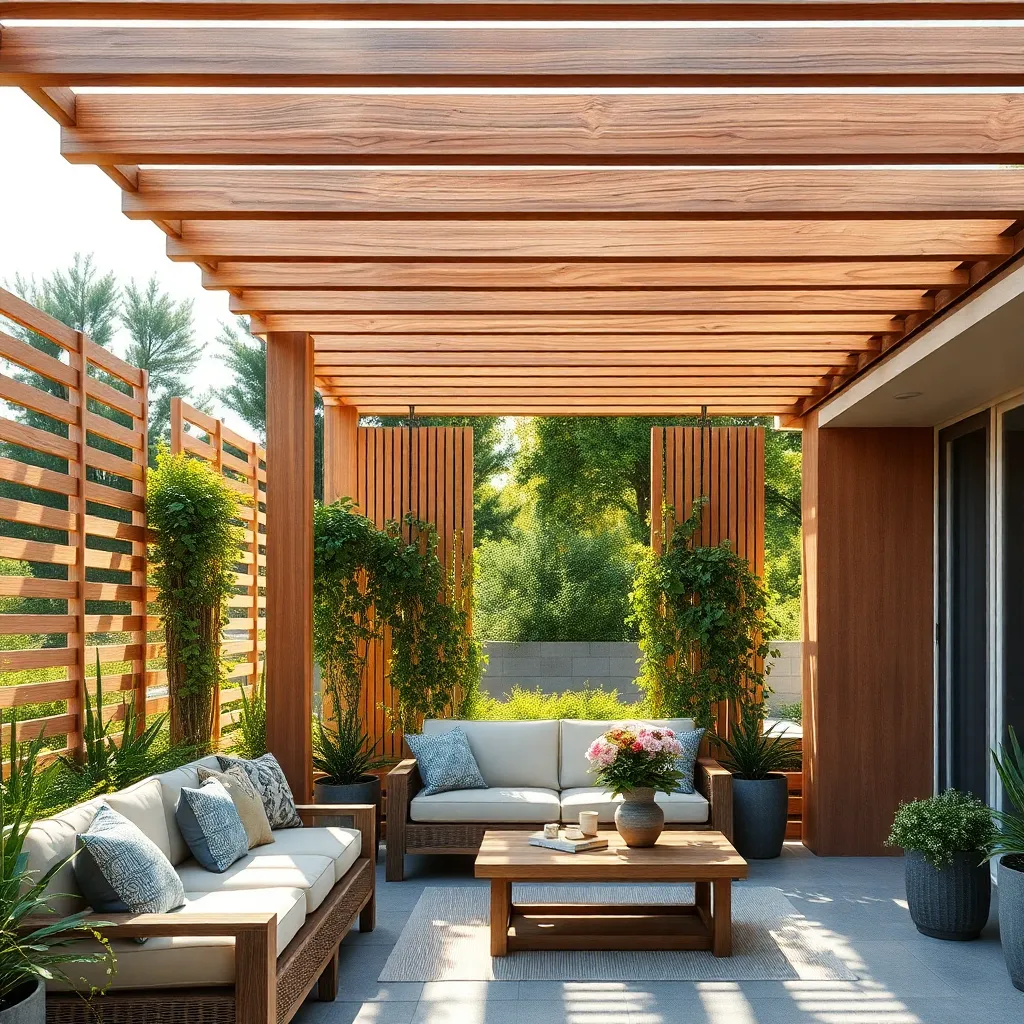
Enhance your pergola’s privacy by installing privacy screens made from durable materials like cedar, composite panels, or weather-resistant fabric. For a clean look, consider screens that reach at least 6 feet tall and attach securely to the pergola’s frame using brackets or tension rods. Beginners can start with simple lattice panels, while advanced gardeners might integrate adjustable slatted screens for customizable shade and airflow control.
To maximize both privacy and style, incorporate elements such as vertical planters, bamboo rolls, or retractable curtains alongside your screens. When building, ensure proper spacing to prevent moisture buildup and allow ventilation, which extends screen lifespan. For a seamless finish, stain or paint wooden screens to match your pergola’s color palette, creating a cohesive and inviting outdoor retreat.
Pergola Roof Options Explained
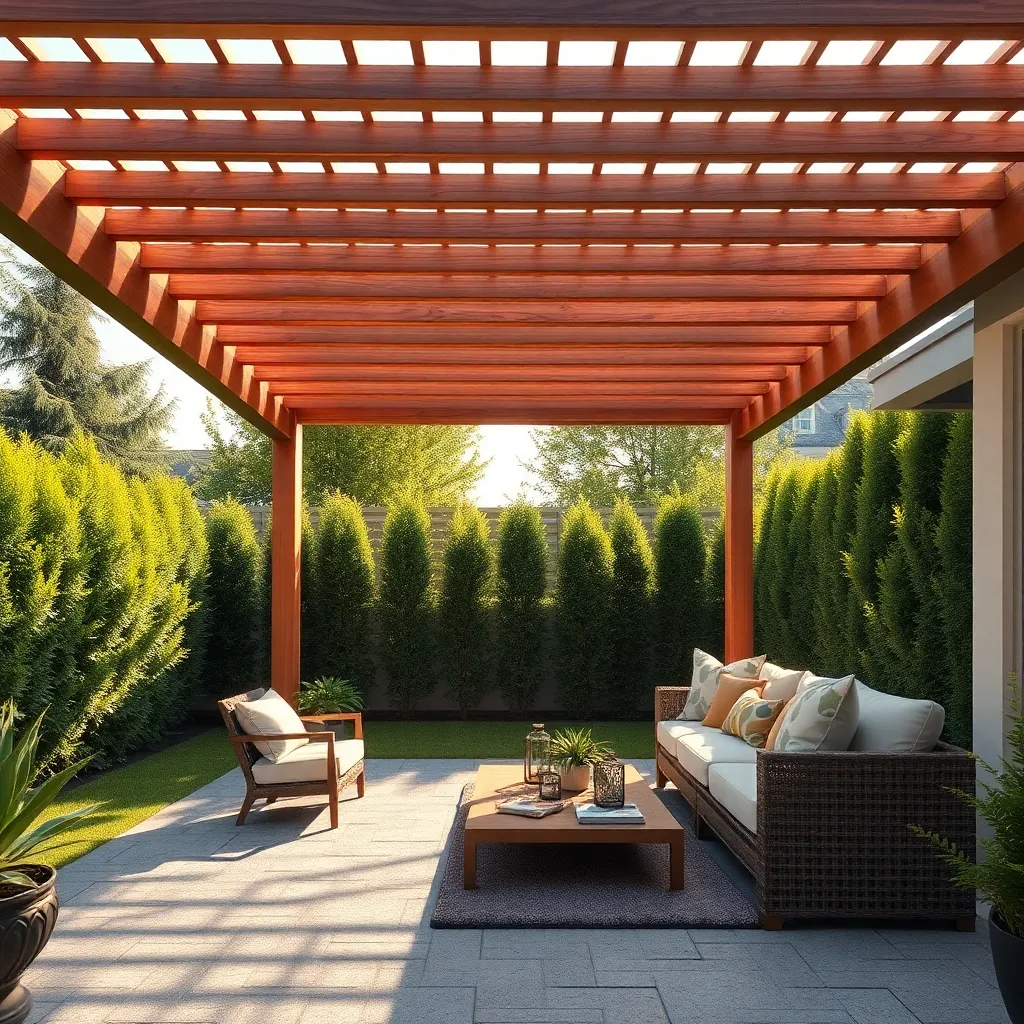
Choosing the right roof option for your pergola is essential to balance shade, weather protection, and aesthetic appeal. Popular choices include fixed solid roofs made from materials like polycarbonate panels or metal sheets, which offer reliable shelter from rain and sun. For a more versatile design, consider adjustable louvered roofs that allow you to control sunlight and airflow, perfect for adapting to changing weather conditions.
When installing a pergola roof, ensure proper support by using sturdy beams and waterproof sealing to prevent leaks. If you prefer a natural look, adding retractable fabric canopies or climbing vines on a lattice roof provides seasonal shade and enhances privacy. Remember to measure your space accurately and select materials that complement your backyard style while meeting your functional needs.
Integrating Outdoor Lighting Solutions
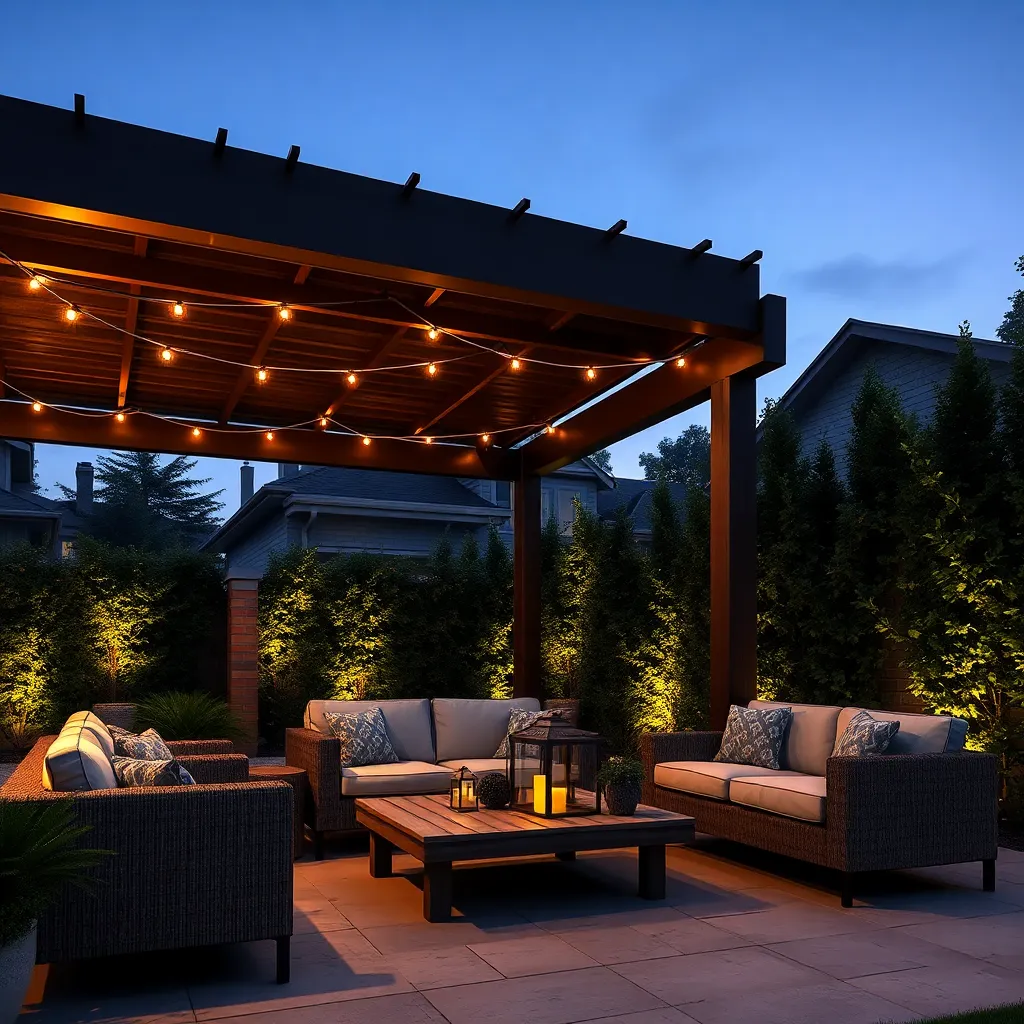
Enhancing your pergola with integrated outdoor lighting not only extends usability after dark but also adds ambiance and highlights architectural features. For easy installation, consider LED string lights or recessed LED strips along crossbeams; these options are energy-efficient and weather-resistant, requiring minimal maintenance. Beginners should start with solar-powered options to avoid complex wiring, while advanced users can install low-voltage landscape lighting connected to a dimmer switch for customizable brightness.
To achieve a polished look, plan lighting placement that complements both function and style. Focus on areas like seating corners and pathways with warm white bulbs (2700K-3000K) to create a cozy atmosphere, and use waterproof fixtures rated at least IP65 for durability. Additionally, integrating smart lighting controls or motion sensors can boost convenience and safety, making your pergola a versatile retreat day or night.
Space-Saving Pergola Ideas
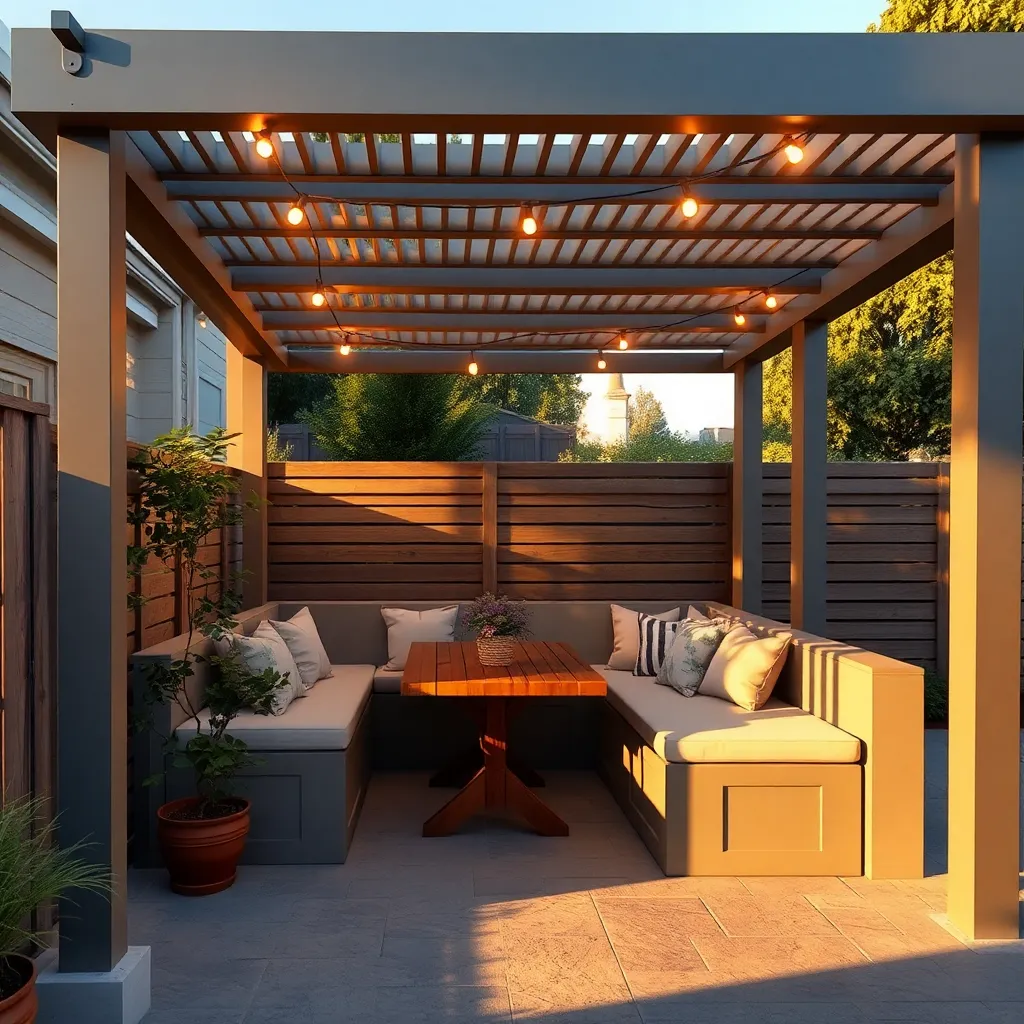
When working with limited space, choose a compact pergola design with a narrow footprint, such as a slim rectangular or square shape no wider than 8 feet. Using materials like lightweight aluminum or cedar allows for easier assembly and less visual bulk, while adjustable louvered roofs maximize shade without overwhelming your yard. For a built-in feel, consider attaching the pergola directly to your house or a fence to save ground space and create a seamless transition between indoor and outdoor living areas.
To further optimize space, incorporate vertical elements like climbing plants or hanging planters instead of bulky furniture under the pergola. Use multi-functional features such as foldable benches or retractable curtains for privacy that can be stowed away when not needed. Advanced tips include installing a retractable canopy or sliding panels to adjust coverage dynamically, giving you control over sunlight and airflow while keeping your backyard feeling open and uncluttered.
Freestanding Versus Attached Pergolas
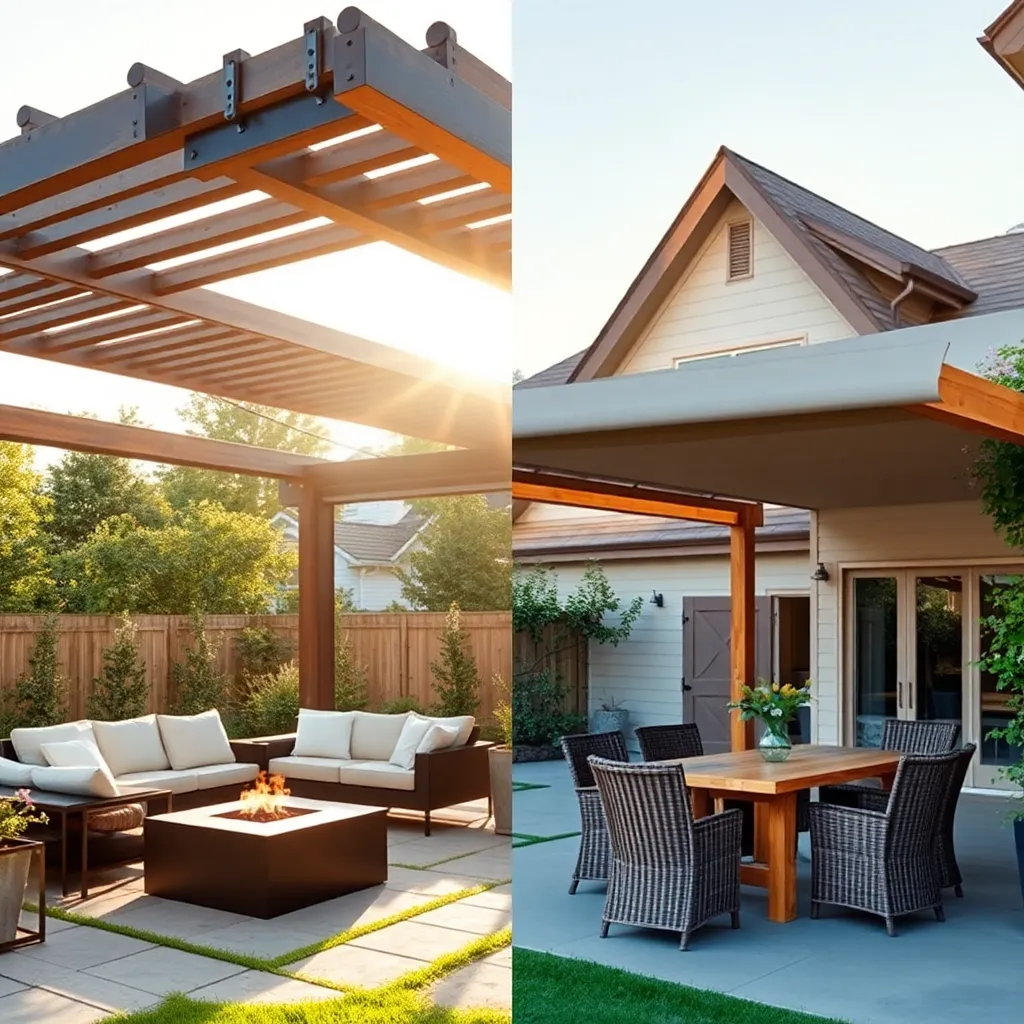
Freestanding pergolas offer maximum flexibility for backyard layout, allowing you to position your shade structure anywhere on your property. When building freestanding models, use durable materials like cedar or pressure-treated lumber, and anchor posts securely in concrete footings at least 24 inches deep to withstand wind and weather. For a polished look, add crossbeams and rafters spaced about 12 to 18 inches apart, which also help support climbing plants for natural privacy.
On the other hand, attached pergolas are perfect for homeowners wanting to extend their living space directly from a patio or deck. These structures rely on a sturdy ledger board fastened to your house, so ensure proper flashing and waterproofing to prevent damage. When designing, consider a depth of 10 to 12 feet for comfortable shading, and use corrosion-resistant hardware to maintain structural integrity over time. For advanced customization, incorporate adjustable louvers or retractable canopies to control sunlight and enhance comfort.
Pergola Seating and Lounge Areas
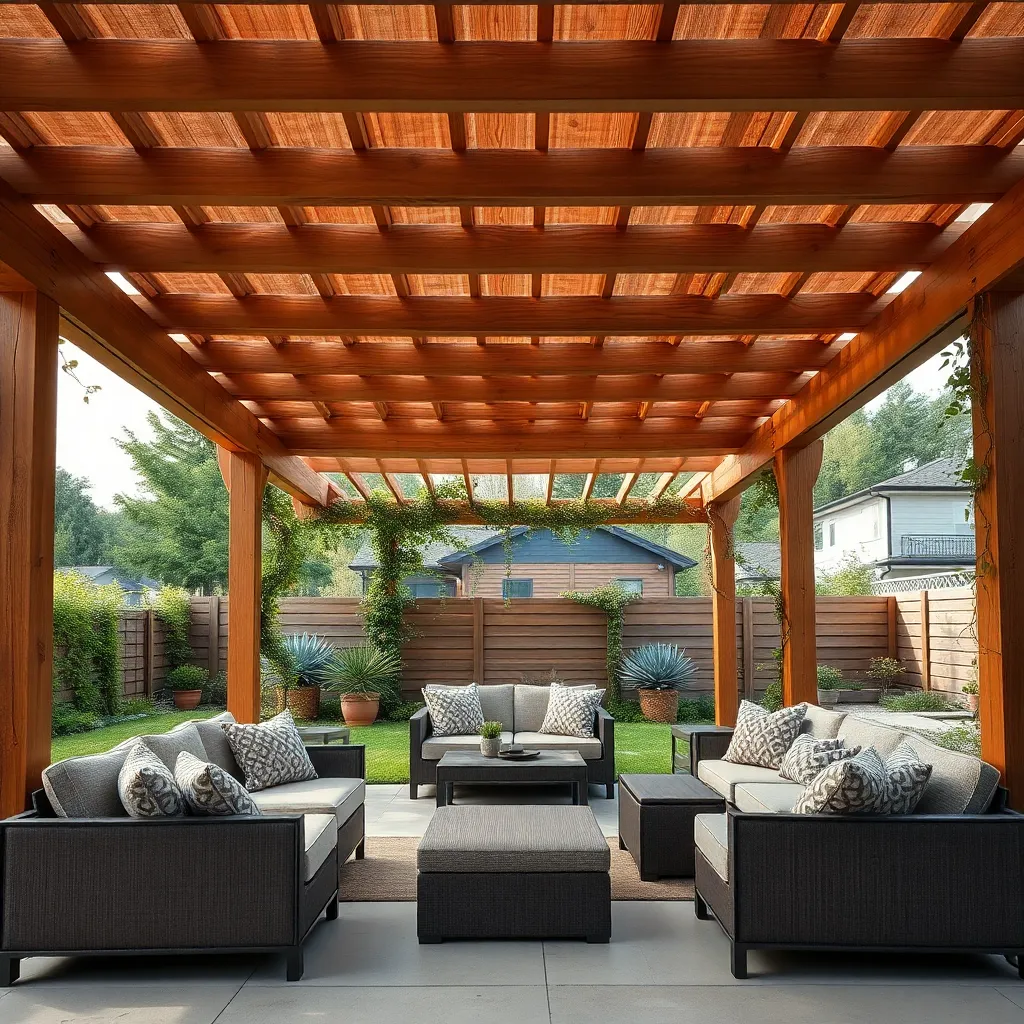
Creating a comfortable pergola seating and lounge area starts with choosing durable, weather-resistant materials like teak, cedar, or powder-coated aluminum for furniture. Opt for seating arrangements that maximize space, such as modular sofas or built-in benches, and complement them with plush, outdoor-rated cushions in fade-resistant fabrics to ensure lasting comfort and style.
To enhance privacy and shade, consider integrating retractable fabric canopies, climbing plants, or lattice panels into your pergola design. For advanced functionality, install adjustable louvers or attach curtains to the structure, which allow you to control sunlight and wind exposure, making your lounge area cozy and versatile throughout the seasons.
Weatherproofing Pergola Structures
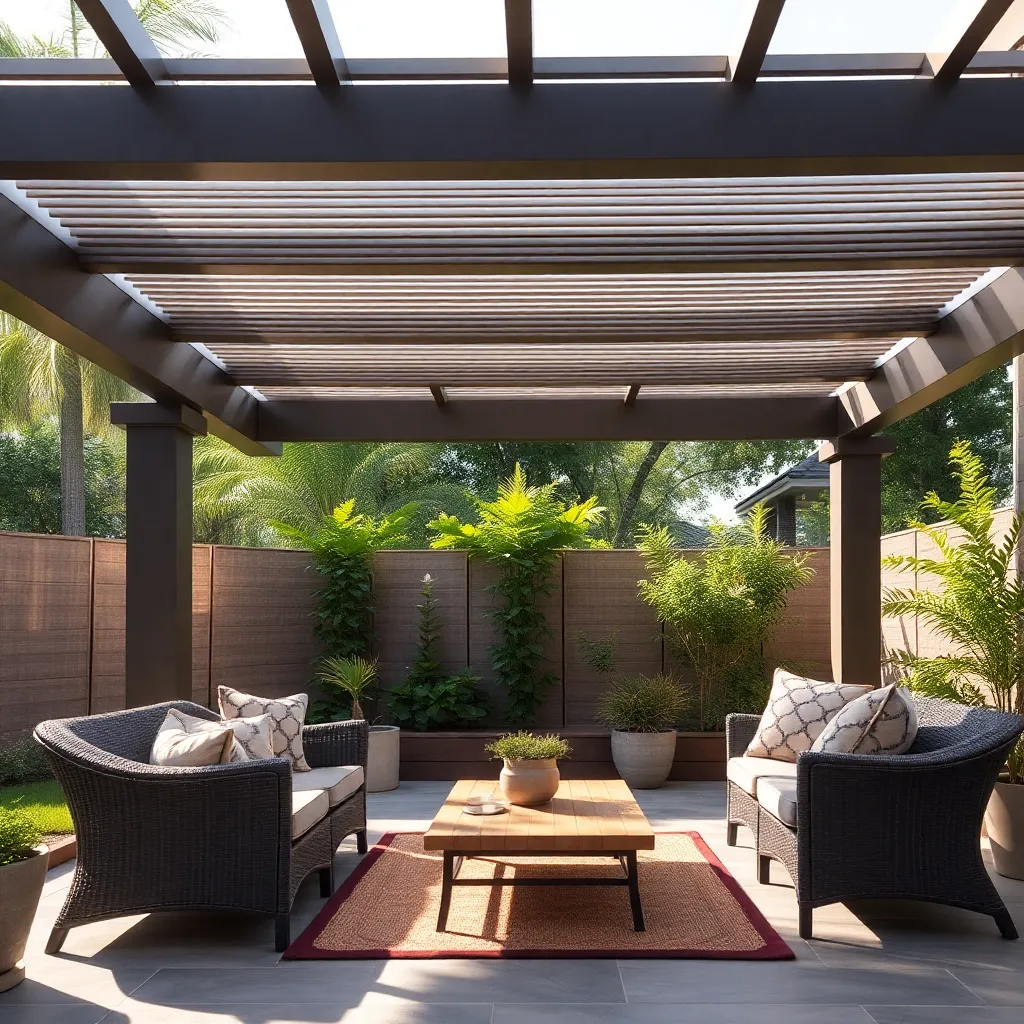
Start your pergola weatherproofing by selecting durable, weather-resistant materials such as cedar, redwood, or pressure-treated wood, which naturally resist rot and insects. For added protection, apply a high-quality sealant or waterproof stain annually to preserve the wood and prevent moisture damage. Incorporate a sloped roof design or polycarbonate roofing panels to efficiently shed rainwater while still allowing natural light in.
Enhance your pergola’s shelter capabilities by installing removable or retractable weatherproof covers like outdoor fabric canopies, vinyl curtains, or shade sails that can be adjusted according to the weather. Additionally, consider adding gutters and downspouts along the pergola edges to direct water away from the structure and surrounding areas, minimizing soil erosion and foundation issues. These practical steps ensure your pergola remains a comfortable and protected outdoor space year-round.
Using Pergolas for Outdoor Dining
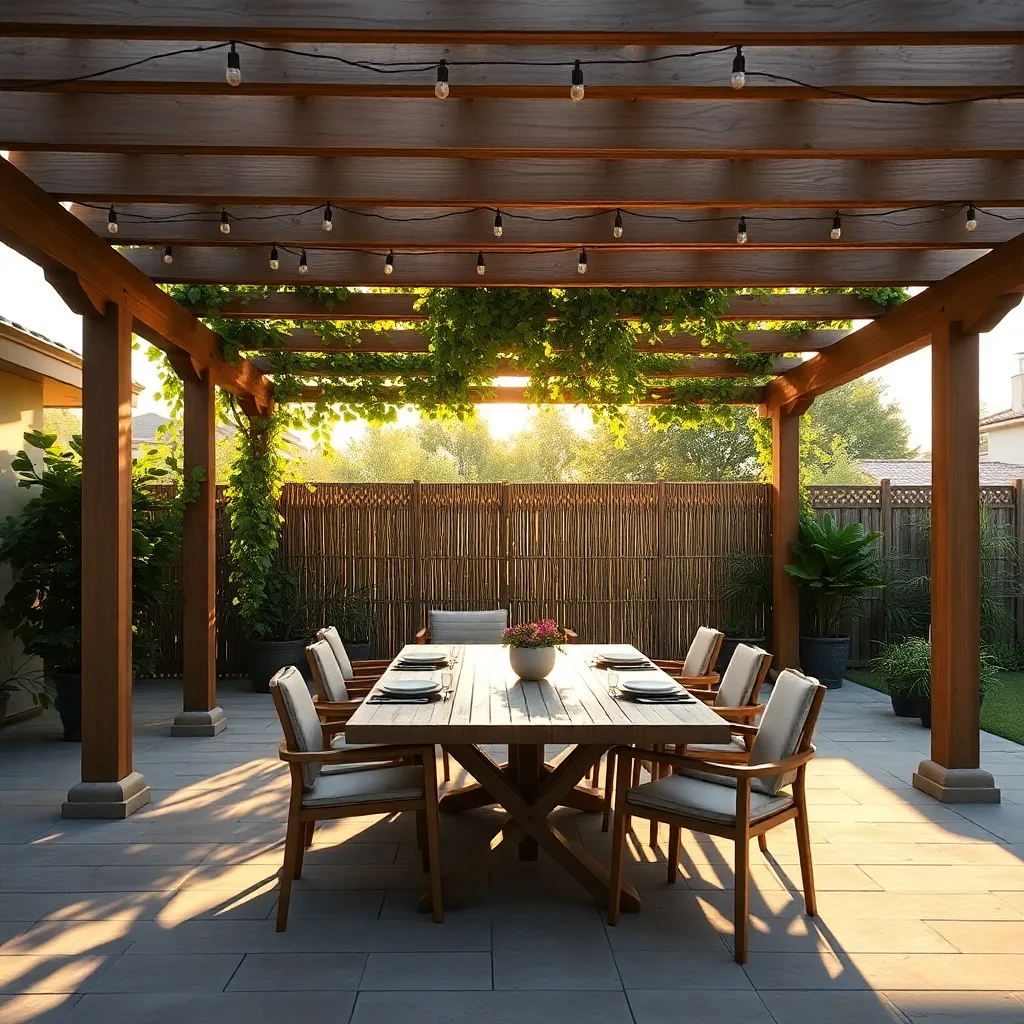
When designing a pergola for outdoor dining, consider dimensions that comfortably fit your table and seating, typically allowing at least 3 feet of clearance around furniture for ease of movement. Using durable materials such as cedar or aluminum ensures longevity while maintaining an attractive appearance; cedar offers natural resistance to decay, and aluminum requires minimal maintenance. Adding a retractable canopy or adjustable louvered roof can provide flexible shade and shelter, enhancing comfort during sunny or rainy weather.
To elevate your pergola dining area, incorporate integrated lighting and ceiling fans for ambiance and airflow, making evenings more enjoyable. For added privacy and wind protection, use climbing plants like wisteria or install outdoor curtains or bamboo screens along the sides. These design elements not only create a cozy atmosphere but also help define the dining space as a distinct, inviting retreat in your backyard.
Color Schemes to Enhance Shade
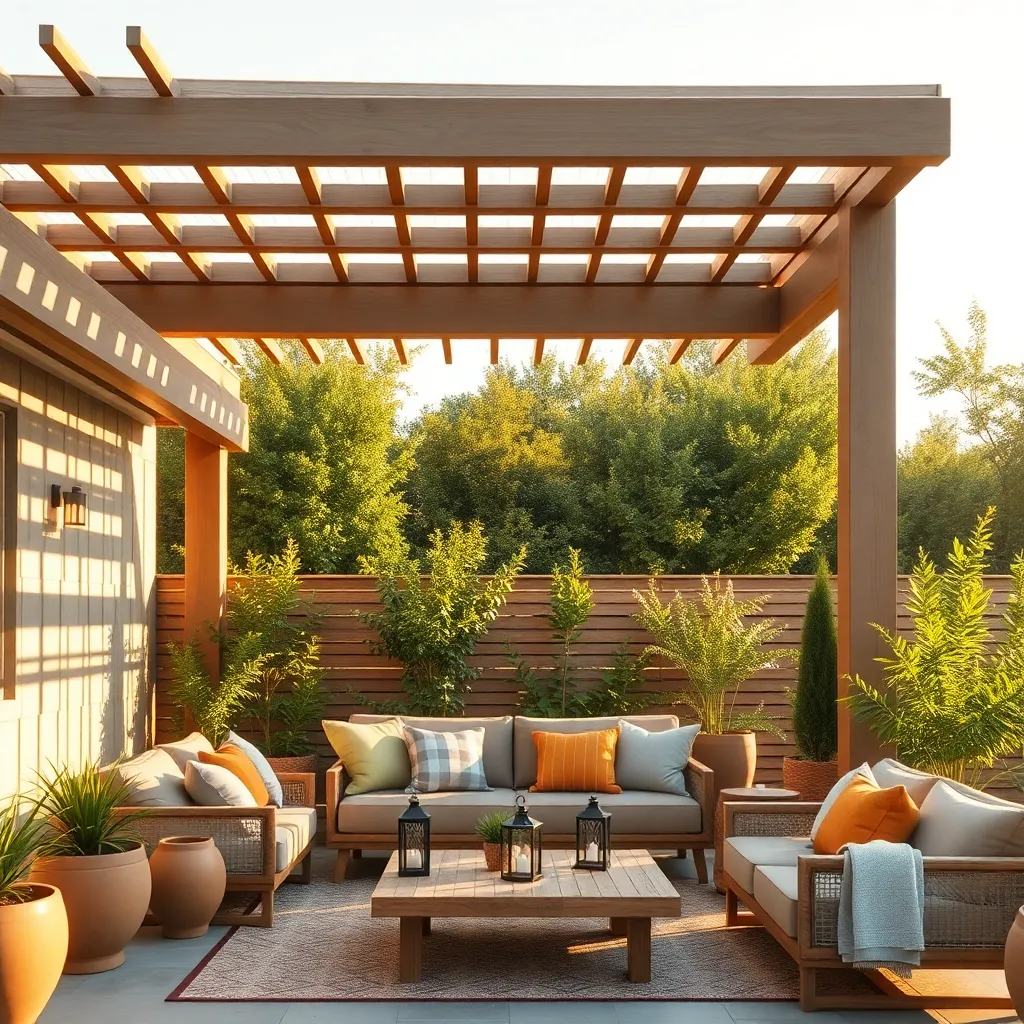
Choosing the right color scheme for your pergola can significantly enhance the shaded area’s appeal and ambiance. Start with neutral tones like soft grays, creams, or natural wood stains to create a versatile backdrop that complements greenery and outdoor furnishings. For a bolder look, consider painting pergola beams in deep blues or forest greens, which blend beautifully with garden landscapes and add a calming effect under the shade.
To elevate your pergola’s visual impact further, incorporate contrasting accents such as brightly colored cushions, outdoor rugs, or climbing plants in vibrant bloom. Using weather-resistant paints and stains designed for exterior wood ensures durability and maintains color vibrancy over time. For advanced styling, try a two-tone approach by painting the frame one color and the slats or lattice a lighter shade to create depth and highlight architectural features.
DIY Pergola Construction Tips

Starting with a solid foundation is essential for a durable pergola. Choose pressure-treated wood or cedar for natural resistance to rot and insects, and ensure posts are securely anchored in concrete footings at least 2 feet deep. For a comfortable scale, set your pergola posts about 8 to 10 feet apart with a height of 8 feet, allowing ample headroom and space for climbing plants or shade cloth installation.
Maximize both shade and aesthetics by spacing the rafters between 12 to 24 inches apart depending on the desired light filtering effect. For added privacy and style, consider incorporating lattice panels or adjustable fabric shades on the sides. Don’t forget to use corrosion-resistant hardware like galvanized or stainless steel screws, and pre-drill holes to prevent wood splitting during assembly.
Maintaining Pergolas for Longevity
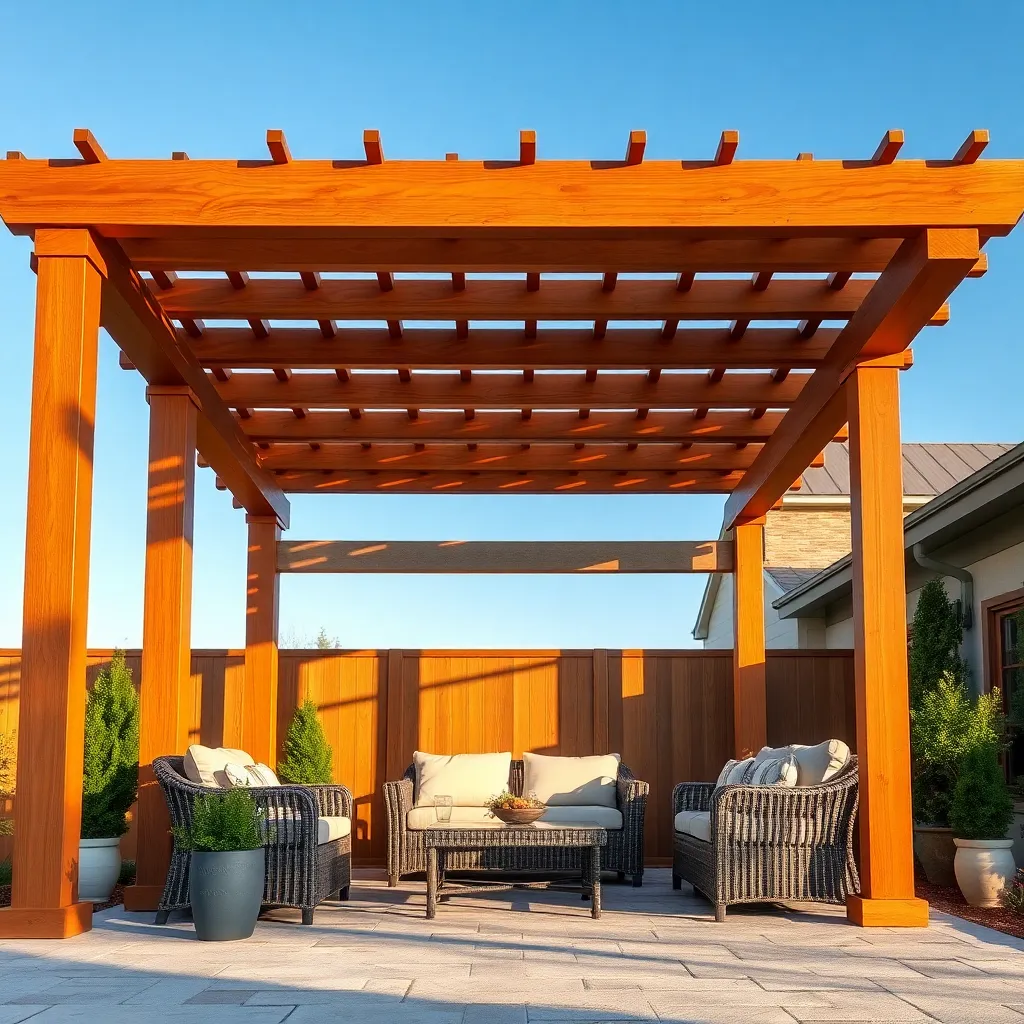
To ensure your pergola stands the test of time, start by choosing durable materials like cedar, redwood, or pressure-treated lumber, which naturally resist rot and insects. Regularly inspect and clean the structure, removing debris and checking for loose fasteners; applying a high-quality exterior sealant or stain every 2-3 years will protect wood from moisture and UV damage.
For advanced care, consider installing adjustable louvered roofs or retractable canopies to reduce weather exposure, extending your pergola’s lifespan. Additionally, reinforce joints with galvanized or stainless steel hardware, and ensure posts are anchored on concrete footings above ground level to prevent water damage and enhance stability.
Conclusion: Creating Beautiful Outdoor Spaces
Creating a backyard sanctuary with the right pergola design beautifully mirrors the foundations of a strong relationship: balance, support, privacy, and growth. From classic wooden structures to modern metal frames, each of the 15 pergola styles offers unique ways to enhance shade and seclusion—just as thoughtful communication, trust, and shared experiences enrich your connection with a partner. Now is the perfect moment to take action: consider which pergola design resonates most with your personal style and space, and start sketching or gathering inspiration for your own backyard retreat. Don’t forget to save or bookmark this article—it’s a valuable resource you can return to whenever you’re ready to create a peaceful, intimate environment for both your outdoor space and your relationship. Embracing these designs isn’t just about aesthetics; it’s about fostering a nurturing atmosphere where love and connection can thrive. Remember, every small step you take to build comfort and privacy in your surroundings reflects the care and commitment that lead to lasting relationship success. You’ve got this!

